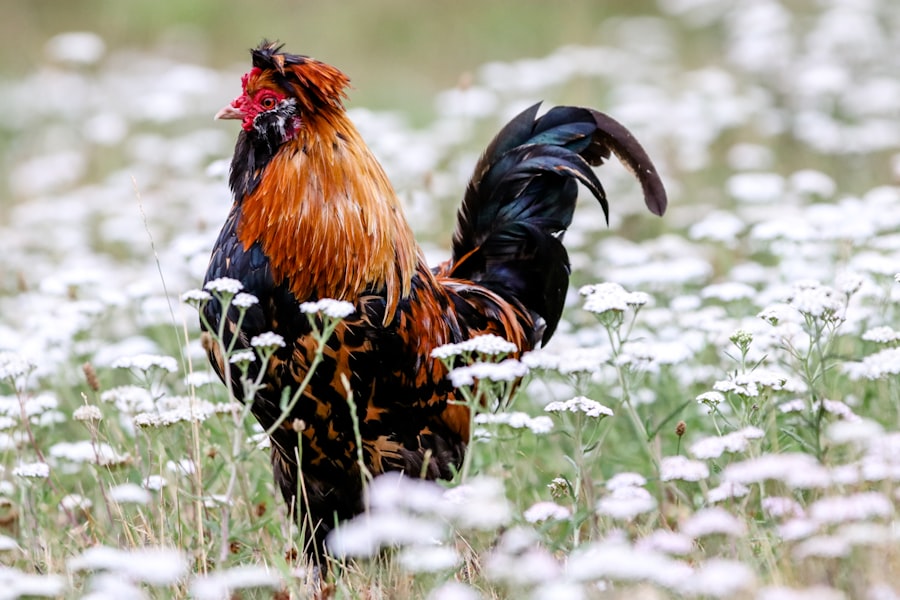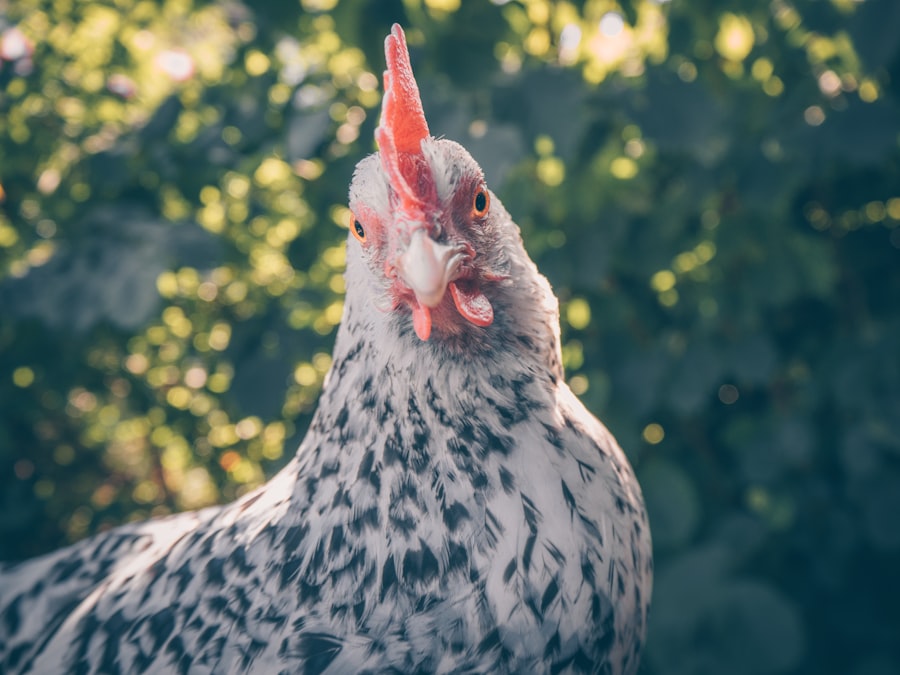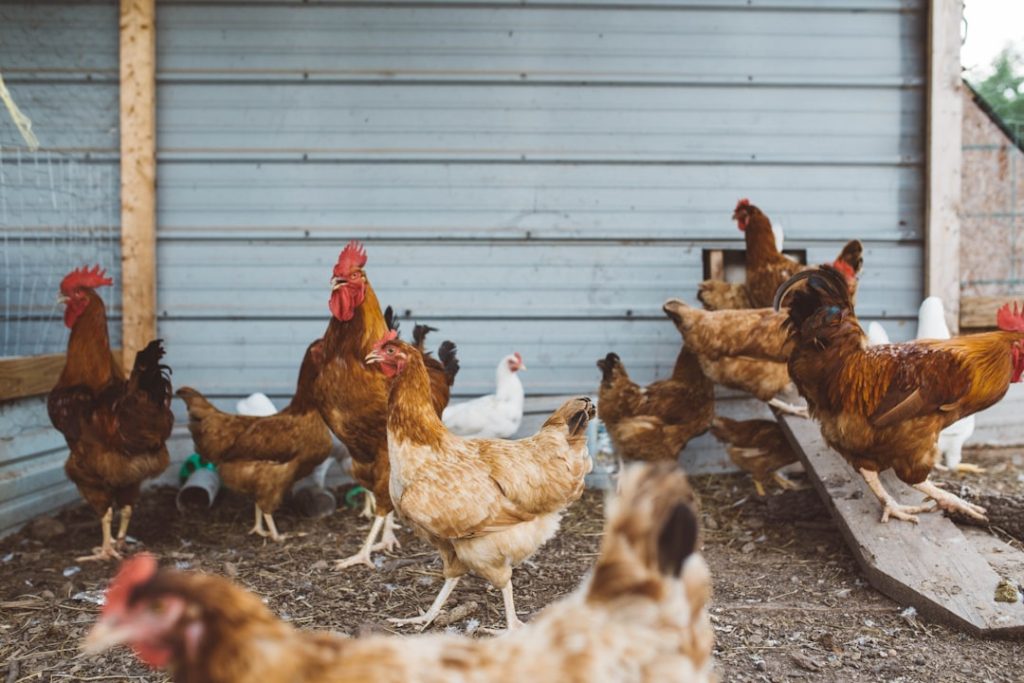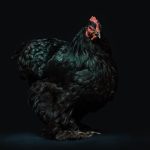Silkie chickens have a history spanning over 2,000 years, with their origins traced to China. Marco Polo first documented these distinctive birds in his 13th-century travel writings. While their exact origins remain uncertain, it is believed that Silkie chickens were initially bred in China and later introduced to the West via the Silk Road trade route.
The breed’s name derives from its soft, silk-like plumage. In ancient China, Silkie chickens were highly valued for their ornamental qualities and were often kept by royalty and nobility. They were also prized for their supposed medicinal properties, with their black skin and bones believed to possess healing attributes in traditional Chinese medicine.
Over time, Silkie chickens have gained popularity worldwide due to their unique appearance and docile temperament. Today, they are a favored breed among poultry enthusiasts and are commonly kept as pets or for exhibition purposes.
Table of Contents
Key Takeaways
- Silkie chickens have a long and mysterious history, with origins dating back to ancient China.
- These chickens are known for their unique physical characteristics, including fluffy feathers, black skin, and blue earlobes.
- Silkie chickens are known for their friendly and docile nature, making them great pets for families and children.
- Proper care and maintenance for Silkie chickens includes providing a safe and clean living environment, regular grooming, and a balanced diet.
- Silkie chickens are popular for their use in exhibition shows, as pets, and for their ability to hatch and raise other poultry breeds.
Physical Characteristics of Silkie Chickens
Physical Characteristics
They are small to medium-sized birds with a round, fluffy body and a profusion of soft, silky feathers that lack barbicels, giving them a distinct look. Their feathers come in a variety of colors, including white, black, blue, and buff, and they have dark-colored skin and bones.
Distinguishing Features
One of the most striking features of Silkie chickens is their distinctive crest of feathers on top of their heads, which gives them a regal and elegant appearance. In addition to their unique plumage, Silkie chickens also have turquoise earlobes and dark-colored, walnut-shaped combs.
Legs and Hardiness
Their legs are feathered down to their toes, giving them a fluffy appearance even on their lower extremities. Despite their small size, Silkie chickens are known for their sturdy build and are able to withstand cold temperatures better than many other chicken breeds. Overall, their physical characteristics make them a popular choice for both exhibition and backyard poultry keeping.
Behavioral Traits of Silkie Chickens

Silkie chickens are known for their gentle and docile nature, making them a popular choice for families and individuals looking for a friendly and sociable breed. They are known to be very friendly and enjoy human interaction, often seeking out attention from their owners. This makes them an ideal choice for those looking for a pet chicken that can be handled and enjoyed as part of the family.
In addition to their friendly demeanor, Silkie chickens are also known for being excellent mothers. They are often used as broody hens to hatch and raise chicks from other breeds due to their nurturing instincts. They are attentive and protective mothers, making them an ideal choice for those looking to raise chicks naturally without the need for an incubator.
Overall, the gentle and nurturing nature of Silkie chickens makes them a popular choice for those looking for a friendly and sociable breed.
Silkie Chicken Care and Maintenance
Caring for Silkie chickens requires some special considerations due to their unique physical characteristics. Their fluffy plumage requires regular grooming to prevent matting and tangling, which can lead to health issues if not addressed. Regularly checking and grooming their feathers is essential to ensure they remain clean and free from debris.
Additionally, their feathered legs and toes require extra attention to prevent the buildup of dirt and moisture, which can lead to infection. Silkie chickens also require protection from extreme weather conditions due to their delicate feathers and skin. They are more susceptible to cold temperatures and should be provided with a draft-free coop and additional bedding during the winter months.
In hot weather, they should have access to shade and plenty of fresh water to prevent overheating. Additionally, providing a balanced diet that includes high-quality feed and access to fresh greens is essential for maintaining their health and well-being. Overall, caring for Silkie chickens requires attention to their unique grooming needs and providing a suitable environment to ensure their health and happiness.
Popular Uses of Silkie Chickens
Silkie chickens have a variety of uses beyond their ornamental qualities. They are often kept as pets due to their friendly nature and unique appearance, making them a popular choice for families and individuals looking for a companion bird. Additionally, they are valued for their broodiness and make excellent mothers, often used to hatch and raise chicks from other breeds.
This makes them a popular choice for those looking to raise chicks naturally without the need for artificial incubation. In addition to their role as pets and broody hens, Silkie chickens are also valued for their meat in some cultures. While they are not as large as traditional meat breeds, their dark-colored skin and bones are considered a delicacy in some Asian cuisines.
Their meat is often used in soups and stews for its unique flavor and is highly prized for its purported medicinal properties in traditional Chinese medicine. Overall, Silkie chickens have a variety of uses beyond their ornamental qualities, making them a versatile breed with many practical applications.
Different Varieties of Silkie Chickens

Color Variations
The most common colors of Silkie chickens include white, black, blue, buff, and partridge, each with its own unique beauty. Additionally, there are also frizzled varieties of Silkie chickens, which have feathers that curl outward instead of lying flat against the body, giving them a distinctive appearance.
Size Variations
In addition to color variations, there are also bantam and standard-sized Silkie chickens. Bantam Silkies are smaller in size and are often preferred for their ornamental qualities, while standard-sized Silkies are larger and may be used for both ornamental and practical purposes.
Choosing the Perfect Silkie
Each variety of Silkie chicken has its own unique charm and appeal, making it easy for poultry enthusiasts to find the perfect Silkie chicken to suit their preferences.
Fun Facts about Silkie Chickens
– Silkie chickens are known for their gentle nature and are often used as therapy animals in some settings due to their calming presence.
– In addition to their unique appearance, Silkie chickens are also known for their distinctive crowing sound, which is softer and more melodic than that of other breeds.
– Silkie chickens have five toes on each foot instead of the usual four found in most chicken breeds.
– The exact origins of the Silkie chicken’s fluffy plumage are still unknown, adding to the mystery and allure of this unique breed.
– In some cultures, Silkie chickens are considered a symbol of good luck and prosperity, making them highly prized among poultry enthusiasts. In conclusion, Silkie chickens have a rich history dating back over 2,000 years and continue to be valued for their unique physical characteristics, gentle nature, and practical uses. Whether kept as pets, used as broody hens, or enjoyed for their ornamental qualities, Silkie chickens have captured the hearts of poultry enthusiasts around the world with their distinctive appearance and charming personality.
With proper care and attention to their grooming needs, these delightful birds can bring joy and companionship to those who appreciate their special qualities.
If you’re considering raising silkie chickens, you may also be interested in learning about different types of chicken coops. Check out this article on A-Frame Chicken Coops to see if this style would be a good fit for your silkies.
FAQs
What are the different breeds of silkie chickens?
There are several recognized breeds of silkie chickens, including the standard silkie, bearded silkie, and non-bearded silkie. Additionally, there are various color varieties within each breed, such as white, black, blue, and buff.
What are the characteristics of silkie chickens?
Silkie chickens are known for their unique appearance, which includes fluffy feathers, a crest on their head, and blue-black skin. They have a gentle and friendly temperament, making them popular as pets. Silkie chickens are also known for their broodiness and are often used as surrogate mothers for hatching eggs.
What are the different color varieties of silkie chickens?
Silkie chickens come in a variety of colors, including white, black, blue, buff, partridge, and splash. Each color variety has its own distinct appearance, with some being more sought after than others for their rarity.
What is the average size of silkie chickens?
Silkie chickens are a small breed, with hens typically weighing around 2-3 pounds and roosters weighing around 3-4 pounds. Their small size makes them suitable for smaller backyard spaces and urban environments.
Are silkie chickens good for egg production?
Silkie chickens are not known for their egg-laying abilities, as they typically lay a smaller number of eggs compared to other breeds. However, their eggs are prized for their unique appearance, as they are often smaller and have a cream-colored shell.
Meet Walter, the feathered-friend fanatic of Florida! Nestled in the sunshine state, Walter struts through life with his feathered companions, clucking his way to happiness. With a coop that’s fancier than a five-star hotel, he’s the Don Juan of the chicken world. When he’s not teaching his hens to do the cha-cha, you’ll find him in a heated debate with his prized rooster, Sir Clucks-a-Lot. Walter’s poultry passion is no yolk; he’s the sunny-side-up guy you never knew you needed in your flock of friends!







